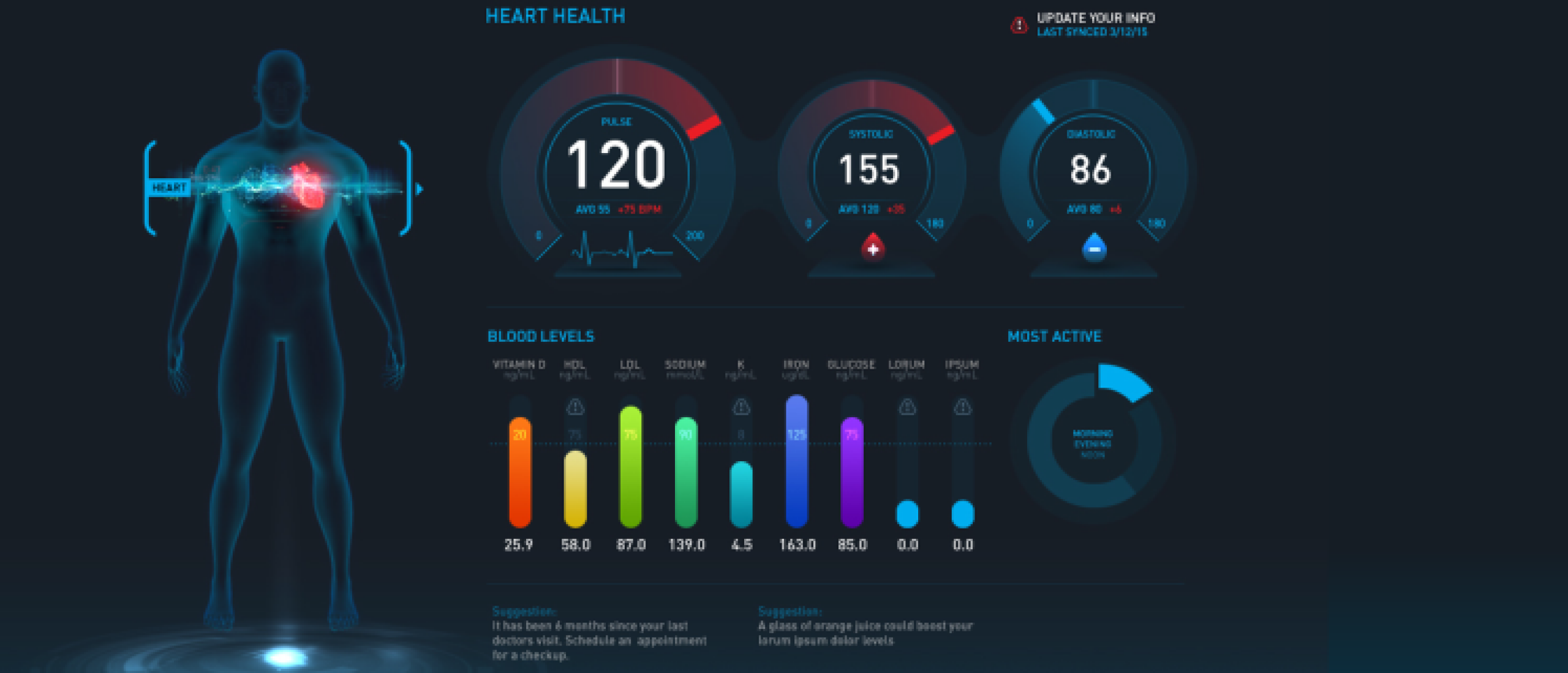
The Quantified Self - Using data & technology to accelerate sustainable performance
Welcome to the Metric Monday newsletter! The purpose of this newsletter is to share biometrical supported lifestyle tips to boost your performance. The newsletter has just started two weeks ago and before diving into the bi-weekly tips, the first couple of editions will give some history on the why, how and what of measuring your own health.
In my first newsletter I started my story on how I have been using health data throughout my life to help me improve my performance and stay or become healthy.
This week I dive a bit deeper into the topic of The Quantified Self, as there is a trend of more and more people who are measuring their health data to gain benefits out of it.
What is The Quantified Self?
The Quantified Self is a movement where individuals use technology to track various aspects of their lives, such as their fitness, sleep, and diet, in order to gain insights and make improvements. By collecting and analyzing data about themselves, individuals can identify patterns, track progress, and make more informed decisions about their lifestyle.
Self-tracking has become pervasive in people’s daily lives and increasingly common in health care. For example, health and fitness ranked ninth out of 34 categories on the App Store, accounting for 3.41% of all the available apps. In Google Play, health and fitness apps ranked 13th out of 33 categories, accounting for 3.53% of all the available apps. Moreover, the App Store hosted 48,608 apps for health care purposes, and Google Play 47,140 in the third quarter during 2020.
Global smartwatch shipments have exceeded 100 million units in 2020 and is continuing to grow. Self-tracking tools have become available for increasing numbers of people across the globe.

What is there to measure?
With technology advancing at a enormously rapid pace, more and more people nowadays can gain access to tools and devices to measure their health markers.
A study published in the Journal of Medical Internet Research found that the most commonly tracked health indicators among self-trackers were physical activity (90%), weight (67%), diet (63%), and sleep (56%).
In general, the most common health markers measured are:
- Heart rate: The number of times the heart beats per minute. It can provide insights into cardiovascular health and fitness levels.
- Heart rate variability (HRV): The variation in time between heartbeats. It can provide insights into stress levels, recovery, and overall health.
- Sleep duration and quality: The amount and quality of sleep can impact physical and mental health.
- Steps: The number of steps taken per day can provide insights into physical activity levels.
- Caloric intake and expenditure: The number of calories consumed and burned can provide insights into energy balance and weight management.
- Body weight: Can provide insights into overall health and weight management.
- Blood pressure: Provides insights into cardiovascular health and overall health.
- Blood glucose: Provides insights into metabolic health and risk for diabetes.
- Cholesterol levels: Gives insights into cardiovascular health and risk for heart disease.
- Body composition: The percentage of body fat, muscle, and bone can provide insights into overall health and fitness levels.
It's important to note that the biomarker you choose to measure will depend on your personal health goals and concerns. Some people may choose to measure other biomarkers, such as hormone levels or genetic markers, depending on their specific health needs.
It's easy to get lost in the amount of different biomarkers which you can measure. The most important metric to measure is undoubtedly HRV. More on why it holds so much information can be read in one of my previous articles.
 My 7 day average HRV score
My 7 day average HRV score
Or you can download the whitepaper we have written with Built For Endurance on the topic via this link: The missing metric to boost business performance.
What's in it for me?
Self-tracking has the potential to improve your health, wellbeing, and quality of life, and may also have broader societal benefits, such as improved productivity and reduced healthcare costs.
From using biomarkers myself, looking at the scientific literature and working with clients all over the world, these are the top 5 benefits of being part of The Quantified Self movement:
- Increased self-awareness: By tracking various aspects of your life, you can gain a better understanding of your behavior and habits, which can help you identify areas for improvement and make more informed decisions about your lifestyle.
- Personalised Insights: The data collected via biomarkers is objective and can provide you with personalised insights into your health and wellbeing. It will be easier for you to link certain behaviour with the impact it has on your biomarker and health.
- Motivation and accountability: Knowing that you are being monitored can motivate to make positive changes to your behavior, and can also create a sense of accountability.
- Better health outcomes: By tracking health data such as heart rate variability, sleep patterns, and physical activity, you can better manage chronic conditions, prevent illness, and improve overall health outcomes.
- Improved productivity: By optimizing their health and wellbeing, individuals may be able to improve their productivity at work and in other areas of their lives.
There is on the other side also a dark side of measuring as it can also contribute to feelings of anxiety and obsession with self-optimisation. Additionally, caution is always recommended when it comes to sharing your health data with a commercial 3rd party.
Overall, the movement of people measuring themselves is only getting bigger. In 2022, about 30% of American adults were using a wearable electronic device, and almost half of them used it daily.
Whether or not you decide to start tracking one or more biomarkers, always start with thinking at the goal you have in mind and how the specific metrics can support you in reaching that goal.
In the next newsletter, I will dive a bit deeper into the practicalities of measuring Heart Rate Variability, the most important biomarker of them all.
Be your best,
Lieven
